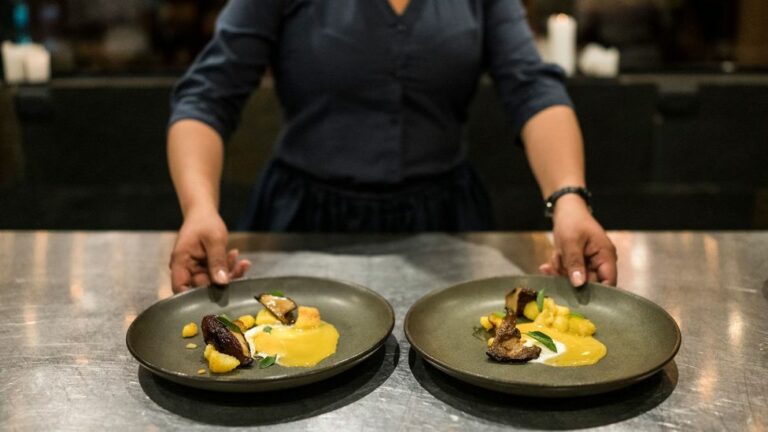Introduction: Bolivian Cuisine and its Diversity
Bolivian cuisine is a fascinating blend of indigenous, Spanish, and African influences that creates a unique culinary culture. The cuisine varies from region to region, with each area having its own specialty dishes. The Andean highlands are known for hearty soups, stews, and grilled meats, while the lowlands have a more tropical flair, with an abundance of fresh fruits, fish, and rice dishes.
Bolivian cuisine has a rich history, and many of its traditional dishes have been passed down from generation to generation. The country’s diverse geography, ranging from the high Andes to the tropical lowlands, has influenced the ingredients and cooking methods used in Bolivian cuisine. With such a wide range of culinary influences, it is no surprise that Bolivian cuisine is so diverse and full of unique flavors.
Traditional Bolivian Food and its Nutritional Values
Bolivian cuisine has a strong emphasis on fresh, locally sourced ingredients. Many traditional dishes are made with wholesome, nutrient-rich ingredients such as quinoa, potatoes, beans, and corn. These ingredients are rich in fiber, protein, and vitamins, making traditional Bolivian food a healthy and nutritious choice.
One of the most popular traditional Bolivian dishes is salteñas, a type of savory pastry filled with meat, vegetables, and spices. It is often eaten for breakfast and is a great source of protein and carbohydrates. Another popular dish is papa a la huancaina, boiled potatoes served with a spicy cheese sauce made with ají amarillo chili peppers. This dish is rich in vitamins and minerals, and the cheese sauce is a good source of protein and calcium.
Common Ingredients Used in Bolivian Cooking
Bolivian cuisine is known for its use of fresh, locally sourced ingredients. Some of the most commonly used ingredients include potatoes, quinoa, corn, beans, and chili peppers. These ingredients are used in a variety of ways, from soups and stews to salads and main dishes.
Meats, such as beef, chicken, and pork, are also commonly used in Bolivian cuisine. Fresh fish is used in the lowlands, where it is more readily available. South American cooking staples like plantains, yucca, and rice are also frequently used in Bolivian cooking.
Religious and Ethnic Influences on Bolivian Cuisine
Bolivian cuisine has been greatly influenced by both religious and ethnic traditions. The Spanish brought their cuisine, including bread, wine, and olive oil, to Bolivia during the colonial period. Indigenous communities in Bolivia have their own traditional dishes and cooking methods, such as the use of the clay oven called a horno.
Religious influences are also evident in Bolivian cuisine. During Lent, many Bolivians refrain from eating meat and instead eat fish or vegetarian dishes. The Catholic tradition of the feast of Corpus Christi is celebrated with a traditional dish called ch’alla, which involves sprinkling food and drink with holy water.
Dietary Restrictions in Bolivian Cuisine: Meat-based Dishes
Bolivian cuisine has many meat-based dishes, but there are also a variety of vegetarian options available. During Lent, many Bolivians traditionally eat fish instead of meat. Additionally, there are many vegetarian stews and soups that are popular in Bolivia, such as chuño phuti, a soup made with freeze-dried potatoes and vegetables.
Dietary Restrictions in Bolivian Cuisine: Dairy Products
Dairy products are not widely used in Bolivian cuisine, but cheese is a popular ingredient in some dishes. Vegetarians and vegans should be aware that cheese is often used in traditional dishes like papa a la huancaina and chairo, a hearty stew made with beef, potatoes, and vegetables.
Dietary Restrictions in Bolivian Cuisine: Gluten-free Options
Bolivian cuisine offers many gluten-free options, as many traditional dishes are made with corn or potatoes instead of wheat. Quinoa, a popular ingredient in Bolivian cuisine, is also gluten-free. However, those with celiac disease or gluten intolerance should be aware that wheat flour is used in some dishes, such as empanadas and tamales.
Unique Bolivian Food Practices Worth Trying
Bolivian cuisine offers a variety of unique and interesting food practices worth trying. One such practice is the use of the horno, a traditional clay oven used to cook bread and meats. Another interesting practice is ch’alla, the tradition of sprinkling food and drink with holy water during the feast of Corpus Christi. Additionally, the Andean practice of chewing coca leaves for energy and altitude sickness prevention is a cultural experience worth exploring.

